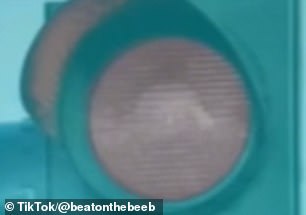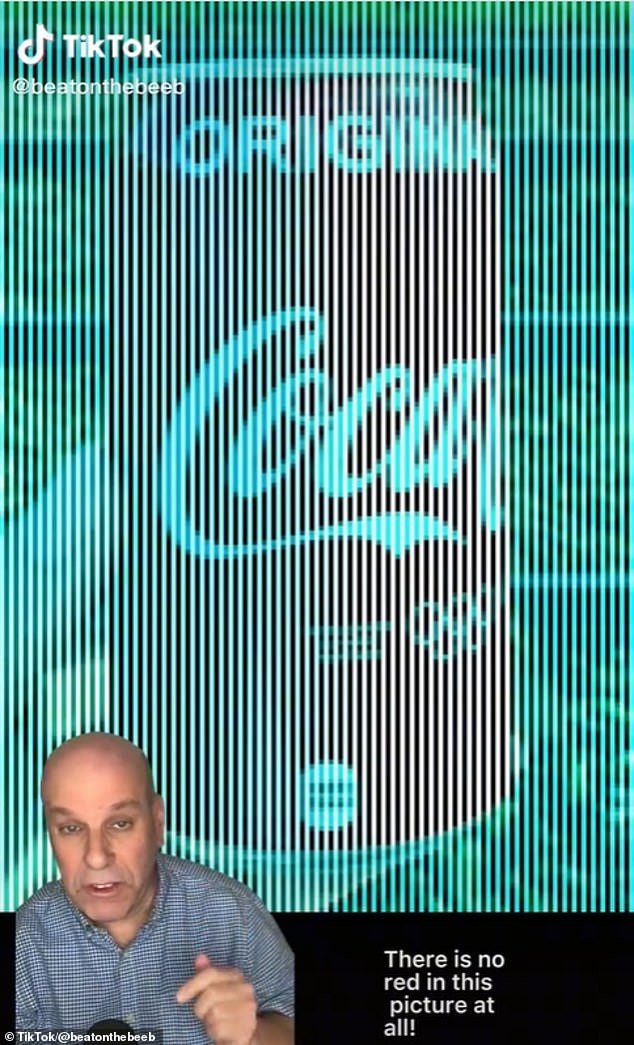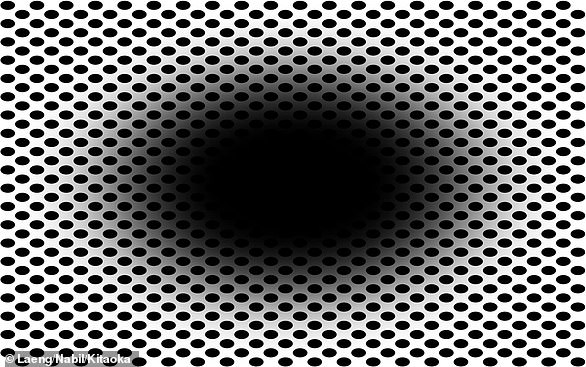Mind-boggling optical illusion tricks your BRAIN into thinking this trafflic light is red
>
When you see a traffic light while driving, it’s quite important to be sure of what colour is showing.
But this optical illusion might make you doubt yourself, as at first glance the top light appears to be red.
However, when the cyan filter is removed, you can see that it is actually grey, and that your brain had fooled you into thinking otherwise.
This trick was shared by serial illusionist Dean Jackson, or @beatonthebeeb on TikTok, who explains how it works.
At first glance the red light appears to be red. However, when the cyan filter is removed, you can see that it is actually grey, and that your brain had fooled you into thinking otherwise


This trick was shared by serial illusionist Dean Jackson, or @beatonthebeeb on TikTok, who explains how it works. if our brain recognises the context of the image and believes it should appear red, it will interpret the grey light as such
‘It’s your brain working overtime convincing you of the red,’ he said.
At the back of the human eye are photoreceptors – cells that respond to the light shining in.
These come in two types, ‘rods’ or ‘cones’, and while rods are sensitive to motion and night vision, the cones that are able to detect colour.
Humans have three types of cone cells, and each of these are most sensitive to a particular colour, either red, green or blue.
The colour cyan is a combination of green and blue, meaning a cyan filter only lets through those two colours, excluding red.
So, when a cyan filter is placed over a red light, the vast majority of it cannot penetrate through, and the object should appear dark grey or black.
However, if our brain recognises the context of the image and believes it should appear red, it will interpret the grey light as such.
This means that when we zoom in and it no longer looks like a traffic light, the image appears to be the grey it truly is.
Mr Jackson presents another example of this, by showing an image of a grey Coke can covered with stripes of a cyan filter.
The stripes with the filter appear red for the same reason as above, however the grey stripes without the filter do so because of the principle of ‘colour constancy’.
This is the phenomenon that allows our eyes and brains to perceive something to be the same colour under different lighting conditions.
However this ability can be tricked, and can make a colour appear different from what it truly is if it neighbours another one.
In this case, a cyan stripe next to a grey stripe can make the grey appear red.

The stripes with the filter appear red for the same reason as above, however the grey stripes without the filter do so because of the principle of ‘colour constancy’
Scientists have also debunked another illusion, which makes the below series of squares appear to be moving when they are actually static.
You see them as shifting because your brain is being tricked by a phenomenon known as ‘illusory motion’.
Our brains detect a change in light as motion, so adjacent light and dark edges, even when static, activate motion-detecting neurons in the visual pathways.
The illusion has been part of human history for 20,000 years, as prehistoric artists used natural bulges of the rock to add illusory volume and depth in cave drawings of horses and bison.

This optical illusion using illusionary motion to trick your brain into thinking the squares are moving. This happens because of the luminesce edges, which your eyes perceive as motion

